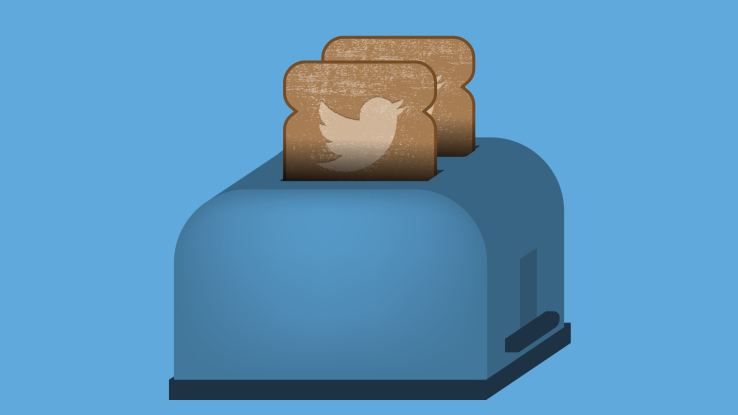

With rumors swirling that Twitter may (or should) sell, it’s time to ask: Is that for the best? Will it maximize what Twitter can — and should — become?
In short, no.
Twitter doesn’t need to sell. Instead of going external for a shot in the arm, the networking brand should work internally — get creative with offerings and tweak current features.
Perhaps that creative nudge will come from the recent hire of Keith Coleman as vice president of product. Coleman’s background in launching social apps such as Frenzy and W2D could be just what Twitter needs to get back to the creativity that took it to the heights it reached in the first place.
A decade ago, Twitter entered the marketplace as a small early-stage company based on gutsy, simple concepts: brief, indexed, subscription-based messaging across a social network. Twitter rode that paradigm to the heights of social network fame and market penetration, boasting a user base of 317 million and a top 10 ranking by Alexa.
But if sold, Twitter’s drive for disruptive innovation could give way to simple window dressing, such as cleaner user interfaces. Leadership at large companies is often unwilling to take bold, paradigm-shifting chances because that risks backlash — even lawsuits — from shareholders if projected earnings fall short.
Most importantly, Twitter’s technology has applicability to exciting verticals, from factory automation to media. It just needs to overcome some of the internal resistance any public company has in pursuing the innovative changes that originally put it on the map.
Unexplored avenues Twitter should travel
Introducing a new paradigm — beyond its current hashtags and handles — doesn’t just help Twitter open up to a broader user base; it also allows for scaling, like Facebook. When your specialty is connecting people through a familiar interface and you have enough momentum built up, that disruptive future is only a matter of vision and will. Let’s imagine a couple of ways Twitter could jet forward.
Customizable viewing preferences: One idea is a Twitter “lens,” which would allow users to view a handle or persona through different points of view. Consider Twitter’s current model. Everyone who follows a user, such as a celebrity, sees the exact same content with no filtering.
This lens feature would filter tweets from that handle (or hashtag) by criteria. Let’s say, for instance, you wanted to find entries of Donald Trump critiquing Alec Baldwin’s impression of him on Saturday Night Live. The lens mechanism would help sift through Trump’s account to pull up those examples.
Innovation is where Twitter needs to put its focus, not selling.
Lenses could be based on geolocation, tweet history, contexts from other users — anything. Clever lens crafting could be an intellectual pursuit that further engages the user base.
Hashtags already serve as coarse filtering, but using machine learning on the backend to introduce more subtlety would give filtering a new richness and precision that exceeds hashtagging — which is limited to the simple user-created categories.
Hashtags were ideal early on when Twitter needed to filter the site’s enormous “tweet space,” which generates about a half a billion tweets daily. But it’s time for them to apply research and launch something akin to Google’s algorithms to understand the web’s evolving content.
It’s clear that Dorsey and others are already thinking in this direction. In June, he blogged about increasing the app’s investment in machine learning, citing its acquisitions of machine learning startups Madbits, Whetlab and Magic Pony.
Twitter-specific devices: Twitter could also throw its hat into the growing IoT market, making the app the go-to source for devices capable of generating real-time tweets. The buzz is growing around putting IoT centers in homes. Twitter is the perfect enabler of this because of its brand recognition.
Imagine subscribing to a smart refrigerator that tweets when opened, notifies the owner when it’s running low on produce or sends images of its remaining contents to its owner. Subscriptions would be managed in private Twitter spheres only accessible to the home owner’s users.
If Twitter were a plug-and-play solution for home security or “Jetsons”–level futuristic convenience, revenue would come through paid subscriptions rather than ads, ensuring a predictable cash flow in addition to the variable income generated by ads — and the unpredictable news trends that drive users to them.
Eventually, partnerships with manufacturers are the obvious route. “Twitter-enabled” will be a selling point, from toasters to dog toys to cars. And the more such devices one acquires, the more the collective intelligence of a home or office increases.
Innovation is where Twitter needs to put its focus, not selling. The upgrades mentioned above are just two of many alterations the app can make to open up the platform to wider audiences.
Handing control over to the highest bidder likely just puts a new shine on the status quo. The user base is there, the smartest guys in the room are there and the research is there to bolster. Branching out from within via product innovation can help Twitter’s platform change global discourse on how we live and work.
Featured Image: Bryce Durbin/TechCrunch

